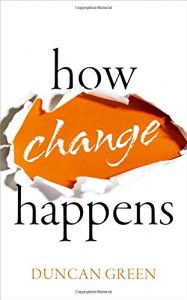The metaphor ‘economic miracles’ as applied to the few once-poor countries that have achieved a trajectory of catch-up growth is revealing: these growth dynamics are spectacular, but happen very rarely. In their terrific new book, Beating the Odds: Jump-Starting Developing Countries, Justin Yifu Lin and Célestin Monga give the best overview account I’ve read of how countries might begin to achieve the lift-off from poverty trajectory, and an outline of how in practical terms governments might go about it. And although directed at poor countries, their analysis is more general.
The book points out that mainstream thinking is both impractical and factually wrong. Impractical because, given the emphasis on institutions now, the advice is often: “Be more like Denmark.” Sure, that would be marvellous. Incorrect, because the examples we have of countries reaching escape velocity for the most part did not have the fine, transparent and effective institutions or high-quality infrastructure now usually recommended as preconditions.
One of the platitudes they attack is that corruption or at least bad governance is the main barrier holding back poor countries. Rich countries have corruption scandals too, they point out. Are these less severe than in poor countries? They ask whether the role of money in US elections or corporate lobbying in the west is really ‘less corrupt’. Is the expected 20% tip everywhere in the US different from the expectation in say India that one will make payments to all kinds of people – in both cases, people not earning very much can’t afford not to expect the tip.
So if not western-style institutions or education or infrastructure, what does lead to growth? The book answers: “Sustained growth takes place because of continuous technological upgrading, institutional innovation and structural change.” At the heart of the process is an evolving set of factor endowments. Poor countries must start from the reality of labour intensive resources, and must focus on using what they have; it’s all about (latent) comparative advantage. The factor endowments will change over time, and hence the need for changing institutions and adopting additional technologies. All countries are different: there is no standard, abstract model. High-profile failed ‘big push’ efforts typically ignored the reality of factor endowments – this includes examples such as Zaire’s (DRC) attempt to start up an auto industry in the 1970s, or Indonesia’s bid to enter the shipbuilding market, when neither had the capital or the skills to produce these goods, nor high enough incomes for a domestic market to grow. Successful ‘miracles’ start with what they have, continuously diversify, and identify and encourage agglomeration economies.
The authors are firm advocates of strategic industrial policies, in the sense of continual upgrading of hard and soft (legal, financial, educational) infrastructures to suit the changing needs of the private sector, the goods and services it produces and the markets it serves. “Clearly, individual firms cannot internalise all these changes cost effectively, and spontaneous co-ordination among firms to meet these new challenges is often impossible. … For this reason, it falls to the government either to introduce such changes or to co-ordinate them proactively. This essential piece of the growth and development puzzle has been missing in the standard model and the traditional development policy framework.” The government also needs to provide information (about say technologies, management techniques and markets) and provide initial human capital (training): “The social value to the economy as a whole of the first movers’ investments is usually much larger than their value to specific firms.” Finally, governments may need to attract FDI or incubate new activities, “to overcome deficits in social capital and other intangible constraints.”
These roles for active government policy are surely valid – and as much for the UK as for a low income economy. The authors are deeply sceptical about the value of (much) foreign aid and especially the multiple conditionalities attached.
In short, “Modern economic growth is a process of continuous structural changes in industry and technology and in political and socioeconomic institutions.” This is as true now as it has been everywhere since the late 18th century. As the book points out, this is not a radical new idea – it quotes Simon Kuznets saying so in 1966, and indeed economists from Marx and Schumpeter to Robert Solow and Joseph Stiglitz have made essentially the same point. Somehow, though, by the time the official aid organisations get involved, the policy advice has been bowdlerised into a standard set of impossible conditions, not recognising how counter-productive these can be in a second-best world.
Elsewhere, the authors have developed a more practical toolkit (the GIFF, growth identification and facilitation framework) for governments to identify their economies’ specific endowments and niches. The downside of recognising the importance of context is that one cannot sum up an economic development programme in ten universal bullet points. In general terms, the book supports export zones and infrastructure investment, and mitigating rent-seeking through exposure to the sunlight of foreign competition as well as political leadership.
The book ends with The Conference of the Birds: thousands of birds embark on a long and perilous journey but only 30 make it the whole way. When they reach their destination, they find the mythical king they were looking for is a reflection of themselves. Achieving successful development cannot start with a list of mythical missing ingredients as preconditions. Development economists and donors have been wrong to insist on an ideal model, Lin and Monga argue – and they are no keener on the latest development economics fashion for experiments and RCTs, as these ask micro questions and get micro answers; they cannot address the need for structural transformation. The bottom line is pragmatism, and the willingness to embark on the long and perilous journey, like the brave handful of birds in the 12th century Persian story.
[amazon_link asins=’0691176051,0140444343′ template=’ProductAd’ store=’enlighteconom-21′ marketplace=’UK’ link_id=’78323823-5f0d-11e7-ba4e-51f9194781d5′]

